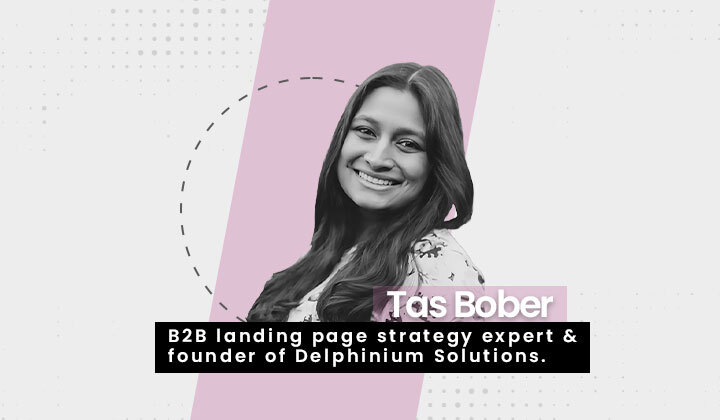It’s hard figuring your subscribers out. There are so many variables to look at – how do users behave when visiting your site, how can you improve their experience, and what makes them keep coming back? And how does email tie into the subscriber journey?
To talk about just that – creating engaging subscriber journeys through email – we reached out to Chad S. White, Head of Research at Oracle Marketing Consulting.
He’s also the author of “Email Marketing Rules,” where he talks about everything email marketing related - from best practices and valuable frameworks to subject line experimenting and smart targeting. Clearly, if you want to understand why email marketing rules, Chad is your go-to guy.
Without further ado, let’s dive right into the interview.
Out of the 5 stages of the subscriber journey (Acquisition, Consideration, Purchase, Retention, Re-engagement), which one matters the most?
Acquisition is destiny.
If you’re attracting the right subscribers to your email program, then you avoid problems with high complaints and short list tenures and tend to get the high engagement and conversion rates you’re aiming for.
Your book talks about building high-performance lists by identifying valuable subscriber acquisition sources. Can you elaborate on what these sources are?
These sources are fairly easy to identify. Just think about what you want in a subscriber. You probably want ones that are familiar with your brand, that think positively about your brand, and that ideally have already purchased from your brand or are poised to.
Where do you find subscribers like that?
You find them in your stores, on your website and in your app (particularly during checkout), at your events, and calling into your call center. All of those are going to produce consistently high-value, low-risk subscribers.
Whereas subscribers who join your list through a third-party site, including your social media pages, tend to be less familiar with your brand and a higher risk.
You’ve previously talked about automating your email messaging so you address moments that matter. What do you mean by “moments that matter” in the subscriber journey, and why is email automation the way to go?
The moments that matter are the naturally occurring points of friction in a relationship and interactions with a brand.
For example, a new customer to a SaaS product will invariably have questions about what to do next or how to best use the service. A good automated onboarding program would address those questions and walk the new customer through how to get set up and start using the platform.
Another example: When a shopper abandons a shopping cart – a natural and common occurrence – there’s an opportunity for brands to help that shopper overcome whatever hesitancy they have.
That hesitancy may be that the shopper isn’t sure what’s in their cart is the best option for them, so that they may be open to alternative product recommendations. Or it could be concerns over price or financing. Or it might be other factors. But the goal of an automated cart abandonment email would be to try to address those concerns.
How can email affect and support the different stages of the customer journey?
There are moments that matter throughout the customer journey and a well-crafted triggered email campaign can tilt the outcome in the brand’s favor.
From welcome emails during the acquisition and onboarding stage to win-back emails during the re-engagement stage, delivering the right message during those times in the customer lifecycle can be highly effective.
What do you think marketers do wrong with their emails, and what do they need to change to create engaging subscriber journeys?
Automated subscriber journeys are incredibly powerful, but brands can make them even more effective by doing a few things.
First, check and ensure that each triggered message is focused, with generally no more than one primary Call To Action (CTA) and one secondary CTA. Attention spans are short, and cramming too much copy and too many CTAs into an email can clutter it, overwhelm and confuse subscribers, and hurt performance.
If you have this problem, the solution is to cut the email copy or messaging or move it to a new email in the series.
Second, brands have many opportunities to segment or personalize their journeys by audience. For example, we’ve already talked about how new subscribers tend to have varying levels of familiarity with a brand depending on what acquisition source they join through. Given that, it makes sense to have different welcome emails for those subscribers who likely have a high familiarity with your brands and those with low familiarity.
And third, brands should adjust the messaging and even design of their triggered emails throughout the year to reflect the seasonality of their business. For example, if you’re a retailer, adding holiday messaging and navigation bar links to your browser and cart abandonment emails is wise. That adds important context to these emails and appeals to the seasonal needs of your subscribers.
Help us understand some email deliverability best practices that marketers should pay attention to.
Email deliverability is complex and multifaceted. It’s determined by 7 factors:
Your mailing infrastructure, including whether you’re fully authenticated
The volume of mail that you’re sending and how consistent your send volumes are
The coding and URLs in your emails
Whether the email addresses you send bounce or are spam traps
The percentage of your emails that generate spam complaints
How engaged your subscribers are in terms of opens, clicks, and other positive behaviors
Your IP and domain reputations with each of the inbox providers, which are a custom mix of the previous 6 factors.
Some of these factors are pretty technical, but the most important ones are about your subscribers reacting positively to your emails. That boils down to respectful permission practices and sending relevant messaging that’s driven at least in part by segmentation, personalization, and automation. In essence, a good email messaging strategy leads to good deliverability.
What are the subscriber metrics marketers need to track but fail to?
Email marketers tend to overly focus on campaign metrics, such as open and click rates. Those are important metrics to track and are great for campaign optimization. However, email marketers aren’t in the business of managing email campaigns—or at least they shouldn’t be.
They should be in the business of managing subscribers. To measure how well marketers maximize the value of that relationship, they should track metrics like subscriber lifetime value, revenue per subscriber, average time on list, and other subscriber-centric metrics. Setting up lots of subscriber journeys using automation is absolutely part of cultivating a subscriber-centric email marketing program.
If you could give one piece of advice to email marketers just starting out, what would it be?
Be an active member of the email marketing community. This is such a vibrant and welcoming community, and there are so many ways to take part, including sharing on social media, attending some of the many email conferences, and joining one or more of the email marketing groups and associations. Join in!
Wrapping Up
We hope this interview helped you better understand how you can use email to create highly engaging subscriber journeys. And how no such journey can exist without email marketing.
That’s all for this interview. Who should we interview next?



